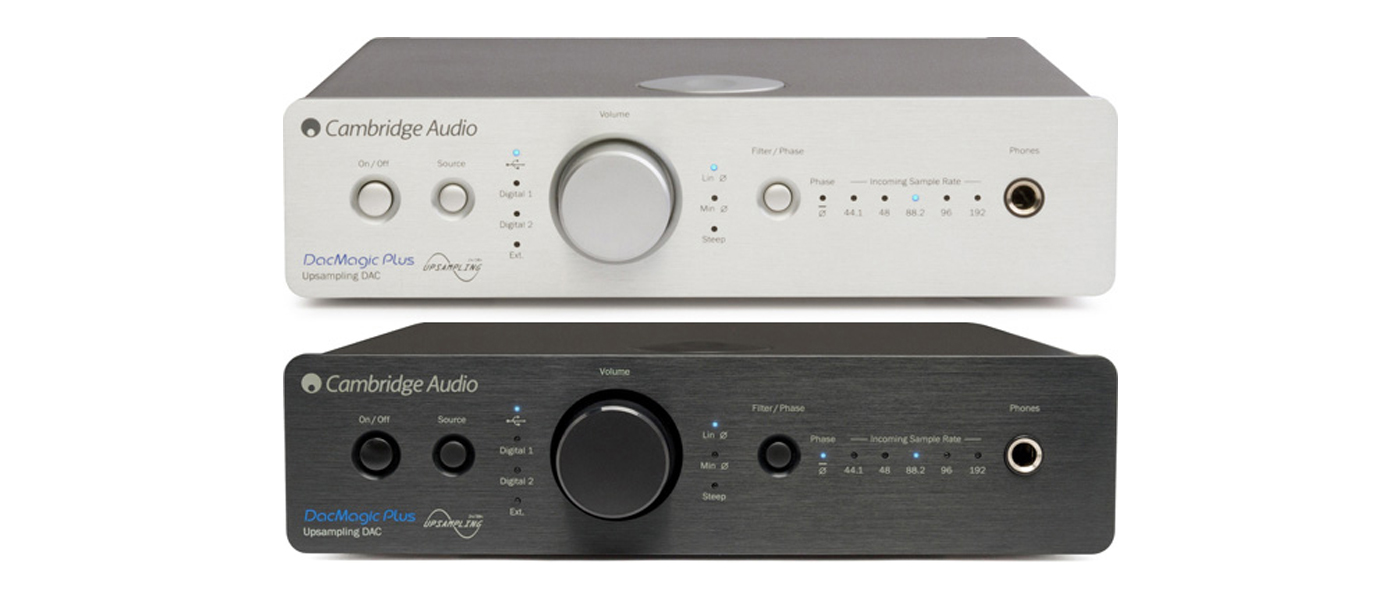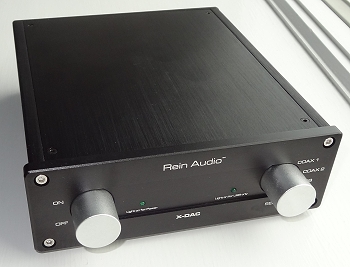Introduction to the Rein Audio X-DAC
USB DACs are hot items now because you can play music from your computer through them and into a set of headphones or to your main hi-fi rig. Some of these DACs only have a USB input, (no S/PDIF inputs) because their main purpose is for use with a computer. Of course, all computers come with audio ciruitry on the motherboard, and if you have a sound card installed in one of the PC card slots, it may very well have an S/PDIF output. However, their quality is often questionable due to the typically low cost of the sound card. Rein Audio, a German manufacturer, makes the X-DAC, which is a 24/192 DAC with both coaxial and Toslink optical S/PDIF inputs, but also, it has a USB input (24/96) to be used with your computer, giving you better sound quality than you would get from your computer’s audio circuit.
Specifications
- Design: DAC
- Native Resolution: 24 Bit/192 kHz (24/96 via USB)
- Digital Receiver Chipset: Wolfson CS8416
- Digital Decoder Chipset: Wolfson WM8740
- Output Chipset: AD797 Fully Balanced in XLR Output
- MFR: 20 Hz – 20 kHz, -0.5 dB
- THD+N: 0.006%
- Output Impedance: 100 Ohms
- Analog Output: 2 Volts RMS
- Inputs: Two Coax, One Toslink Optical, One USB
- Outputs: XLR and RCA
- Dimensions: 2.5″ H x 7.5″ W x 8.8″ D
- Weight: 5 Pounds
- MSRP: $780 USA
- Rein Audio
- SECRETS Tags: Comects, Rein Audio, DAC, USB DAC
The Design of the Rein Audio X-DAC
Although USB DACs may be on you mind because there are so many coming out on the market right now, you should also consider how the unit performs as a regular DAC using the S/PDIF inputs, and is more on this below.
The Rein X-DAC uses Wolfson CS8416 chipset for digital receiving and the WM8740 as the decoder. The analog output stage consists of AD797 op-amps, run in balanced configuration for the XLR output.
The front panel has an on/off knob on the left, an indicator LED when using the USB input, and the input selector dial on the right. It selects Coax 1, Coax 2, USB, and Optical.
The rear panel, shown below, has the analog outputs on the left (the RCA outputs use a different output op-amp), followed by the optical digital input, the two digital coax inputs, and the USB input.

There are three basic types of USB digital audio interfaces used with DACs. One is called “Synchronous”, and this means that the USB DAC uses the computer’s digital clock that times the bitstream. As you can imagine, the quality of the digital audio circuitry in a typical computer is not very high quality, so there is a lot of jitter in the bitstream, which results in significant amounts of harmonic distortion in the analog output. I say significant in the relative sense, in that there is more distortion than if the USB DAC utilizes an “Asynchronous” interface. The asynchrounous USB interface has its own clock, and the bitstream is fed into a buffer, reclocked at a much lower jitter rate, and then decoded, with the result (presumably) being lower distortion than it would have been with a synchronous interface. The less expesive USB DACs are synchronous, due to cost. The third type of interface is called “Adaptive”, which is somewhere in between Synchronous and Asynchronous. It looks at the incoming data and adjusts the original timing rather than reclocking it altogether.
The Rein X-DAC utilizes the adaptive interface. That does not mean it is not as good a USB DAC as any DAC that has a synchronous USB interface, because it is the sum total of the entire circuit that gives you good or not-so-good sound, not any one individual circuit in the signal path.
Because the Rein X-DAC has coax and optical inputs as well as the USB, I would consider this product to be a DAC, period. It has, as a feature, an adaptive USB digital input, along with conventional digital inputs.
The Rein Audio X-DAC In Use
I used the X-DAC with an OPPO-BDP-95 as a transport, Pass XP-20 preamplifier (XLR inputs), Classé CA-M600 monoblock power amplifiers, and Carver Mark IV ribbon speakers. Cables were Wireworld.
Beginning the tests, I listened to CDs and two-channel SACDs using one of the digital coax inputs. The sound was neutral, with a hint of warmth. It was smooth and mellow, without any harshness or grit. I was really kind of surprised at the quality of the sound, considering it is less than $800 (probably an additional $50 to ship it to North America from Europe). I have to give Rein Audio credit for designing a DAC that produced a level of sound purity that just a few years ago, would have cost thousands. Of course, DAC chipsets and op-amps for the output stage have improved greatly during that time as well. But, you could take a sack full of the best quality parts in the world and design junk. It definitly takes engineering prowess to put them all together to produce audiophile-quality sound.
Now for the USB. I have never used a USB DAC interface before, so I was a bit apprehensive about whether it was going to be plug-n-play, or unmentionable language and frustration.
It turned out to be plug-n-play. I simply connected the included USB cable to my computer, the computer said, “Your device is installed and ready for use,” and I selected “USB Audio” as the output in my audio device menu, clicked on some of my favorite albums that I have stored on my computer, and out came the music. Simple, simple, simple.
So . . . . to my astonishment, the sound coming from my computer sounded at least as good as playing a CD on the transport. In a double-blind test, I might very well have thought the USB sound was a tinge better. But, that was for CDs. I can’t put my SACD soundtracks on my computer. I can put 24/88.2 DVD-A music, such as tracks downloaded from HDTracks, and they worked fine as well through the USB input.
The output voltage when using the S/PDIF inputs as well as the USB input is sufficient for most preamplifiers, and in fact, the very low distortion from the Rein X-DAC makes it a good contender for a high end audio system, using these inputs. The distortion from the USB input is a bit higher than with the standard S/PDIF inputs, but it is still low enough to be considered good quality.
This is my favorite jazz album, partly because it just swings, but also because of its prodigy drummer, Buddy Rich. I heard him live in Seattle many years ago, and my soon-to-be-wife Susan was with me at the table, which was about 10 feet from his kit. Sue was sleepy, and began to doze during the music, and Rich commented that the audience was falling asleep. He was referring to Susan. I played it with the transport using the coax input and also directly from the computer to the DAC with the USB input. This album is so old, the recording quality is not really up to 21st century standards, and I couldn’t really hear any difference. The album sounded as good as it could, with either source. Buddy’s cymbals were clear and crisp, without harshness or being overly sibilant. I would sure love it if the producers could find the original tapes and convert them to 24/88.2 or 24/192 PCM high rez downloads.
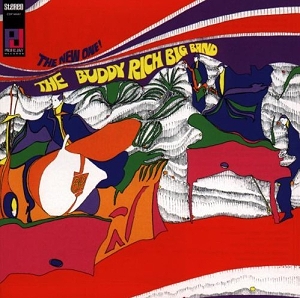
For classical music, I chose this Brahms Early Piano Works album that I had downloaded from HDTracks. Its format is 24/88.2 PCM. Played from the computer through the USB connection, it sounded terrific, with high notes not having any glare that they do when there is significant distortion. My overall impression is that the X-DAC sounded a bit towards analog rather than being totally digital. Warm and smooth. To most audiophiles, that is a good thing. The detail was better than typical tube products, courtesy of the low IM distortion. There was no rolloff at either end of the spectrum. Violins and string bass sounded completely natural.
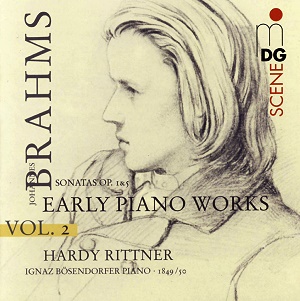
The Rein Audio X-DAC On the Bench
Distortion measurements were made within an 80 kHz bandwidth. The connections were XLR for the analog signal path, and coax or USB for the digital input. The bitstream format is specified on each graph, i.e., 24/48, 24/96, etc.
First, the coax S/PDIF results:
At 1 kHz, using a signal at 0dBFS (the highest loudness level that can be recorded without clipping), distortion was only 0.003%. Output (XLR) was 2 volts RMS.

Using the same signal, but at – 5 dB, distortion was still only 0.003%. The output dropped to 1.2 volts.
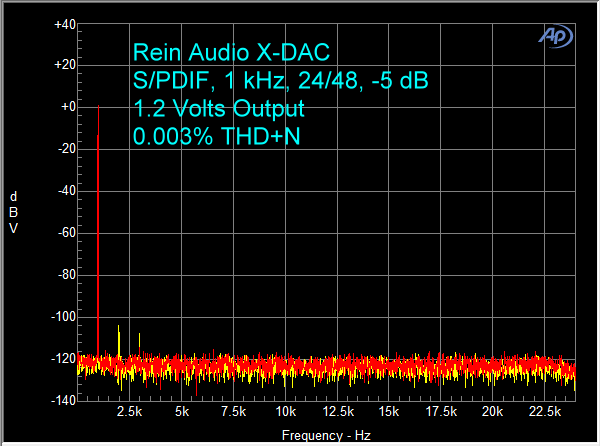
With 24/192 sampling, there were actually a few more distortion peaks than there were at 24/48 sampling.
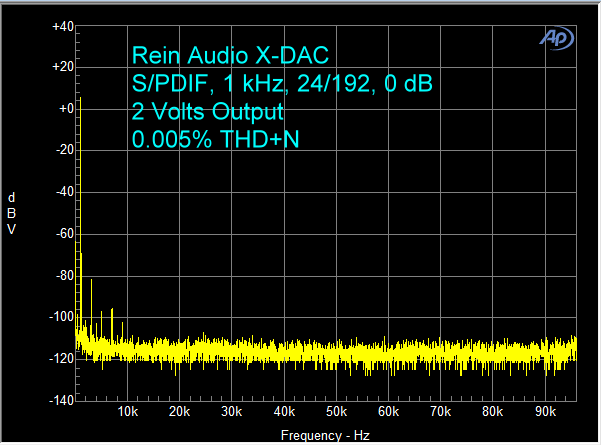
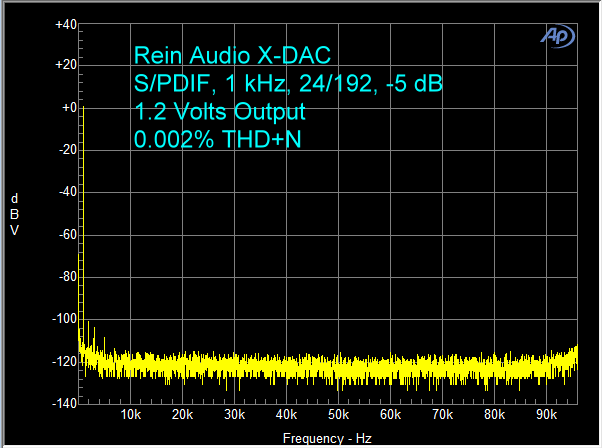
With 19 kHz and 20 kHz sine waves, the B-A peak at 1 kHz was 110 dB bewlow the fundamentals.
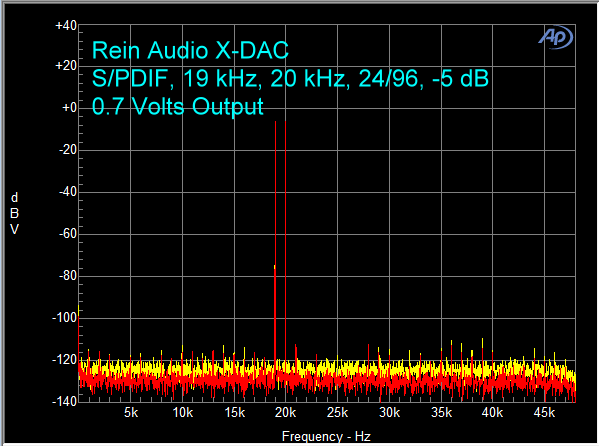
IMD was extremely low, at 0.002%.
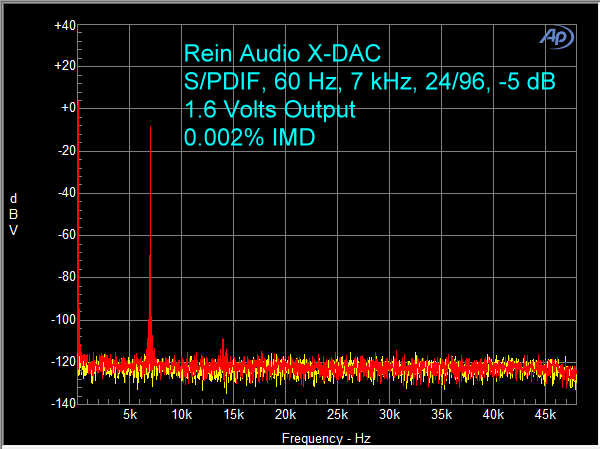
The measured frequency response was ruler flat out to 48 kHz, using 24/96 sampling.
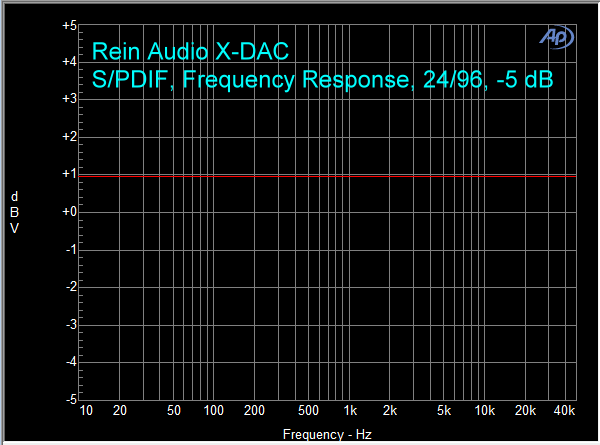
Now, let’s take a look at the results using the USB interface.
At 1 kHz, and 16/44.1 sampling (which is most likely what the typical consumer would be using, having ripped their CDs to their computer), distortion was more than with using the S/PDIF, at 0.04% with the signal at 0 dB (first graph below), and 0.002% at -5 dB (second graph below). The output voltage was about the same at 0 dB test signal as with the S/PDIF inputs (2 volts RMS).
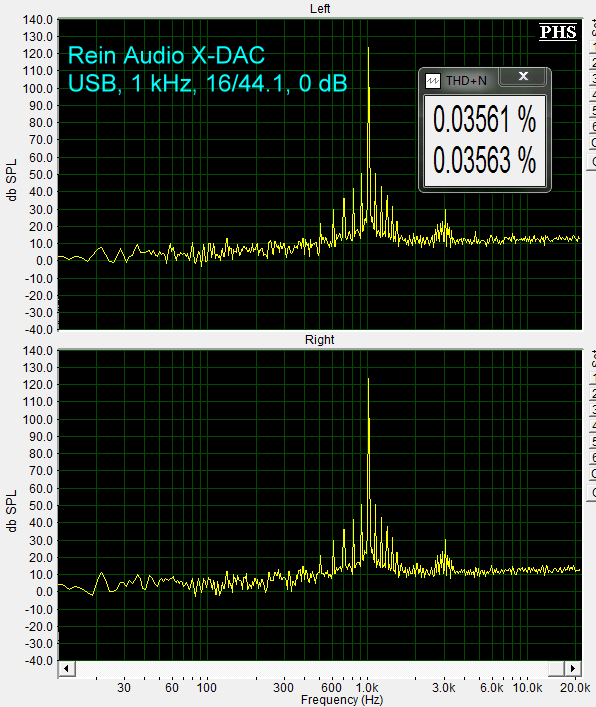
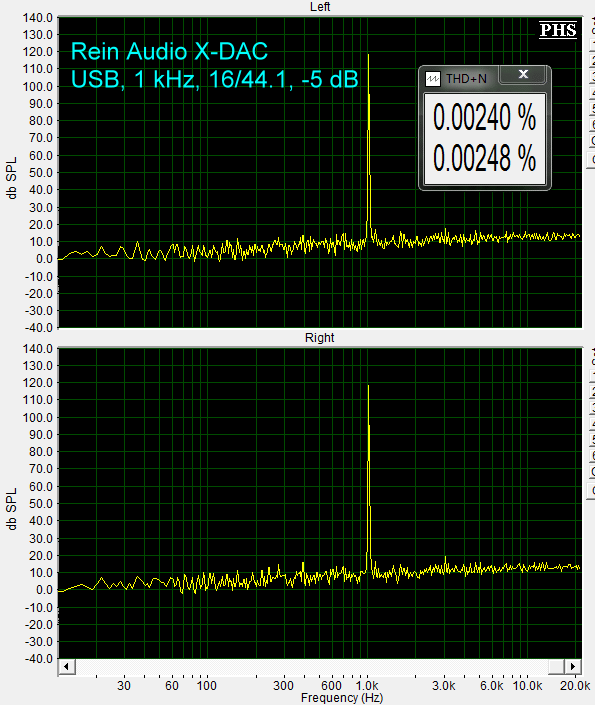
Using the coax digital input (S/PDIF), and 16/44.1 sampling, with the 1 kHz output at 0 dB, distortion was 0.004%, which is lower than it was using the USB input (0.04%), and at – 5 dB, S/PDIF distortion was 0.005%, which is actually higher (considered an insignifcant difference) than it was with the USB input (0.002%).

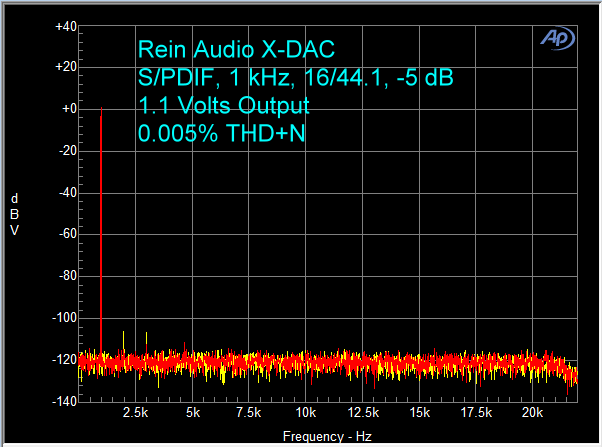
Conclusions About the Rein Audio X-DAC
This has been one of my first experiences with a DAC that has a USB input, and like my first experience, it is enlightening to say the least. The only thing still annoying is that we cannot play SACD tracks from our computers or portable music players without their having been converted from DSD to PCM before decoding. When that finally happens – and it appears that there is progress in the world of the McIntosh – the disappearance of hard media (music discs) is well within sight. But don’t throw your Universal player away just yet. There are still Blu-ray movies to contend with and it is going to be awhile before the studios relent and allow us to download high definition movies with the same bitrate as on the disc (24 Mbps) and store them on our computers for playback through HDMI outputs on the video card.
Although the Rein Audio X-DAC is a very good product, it has strong competition in that price range.


